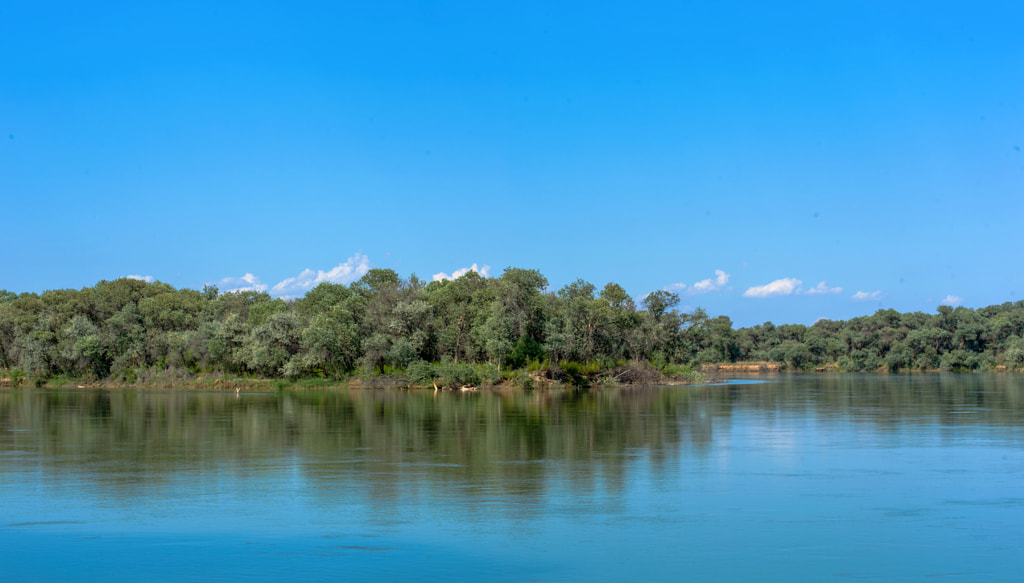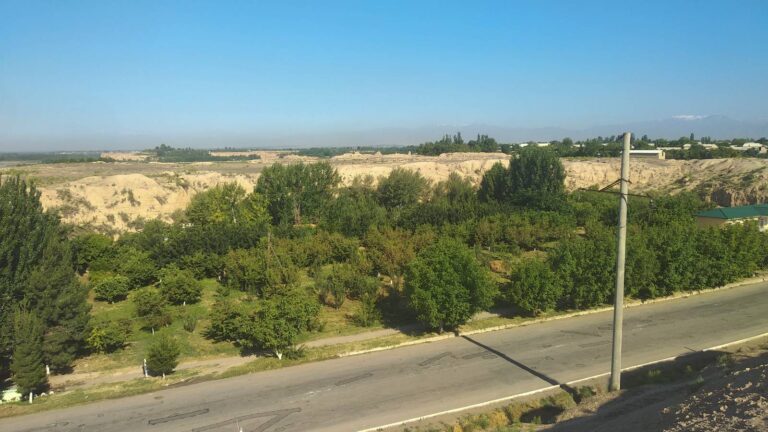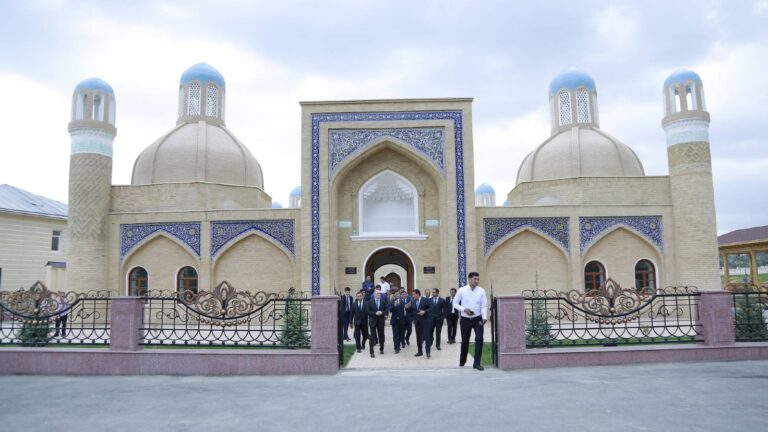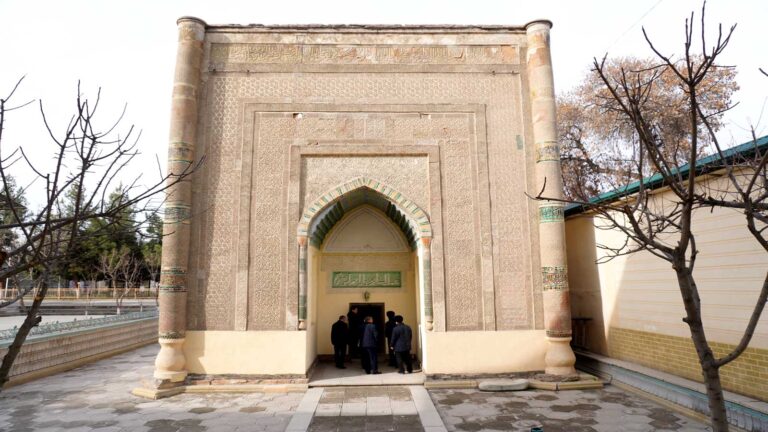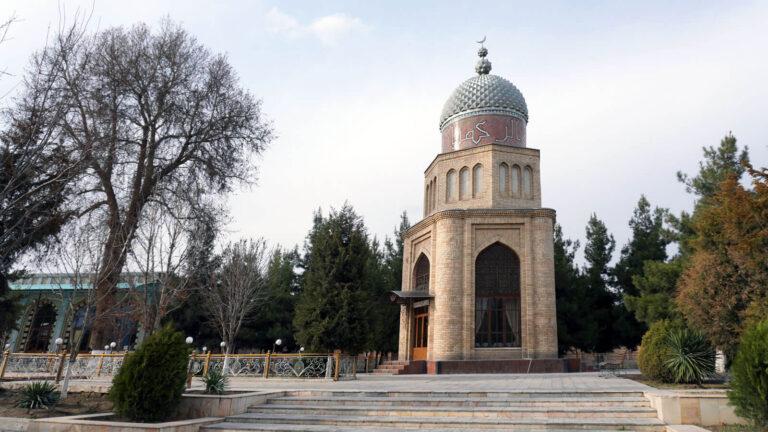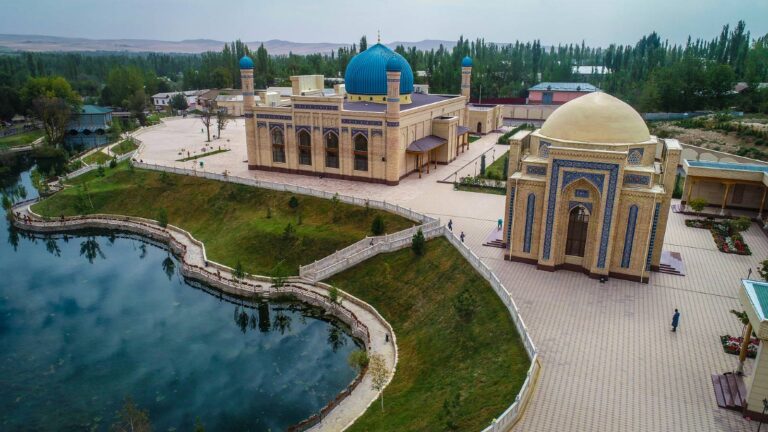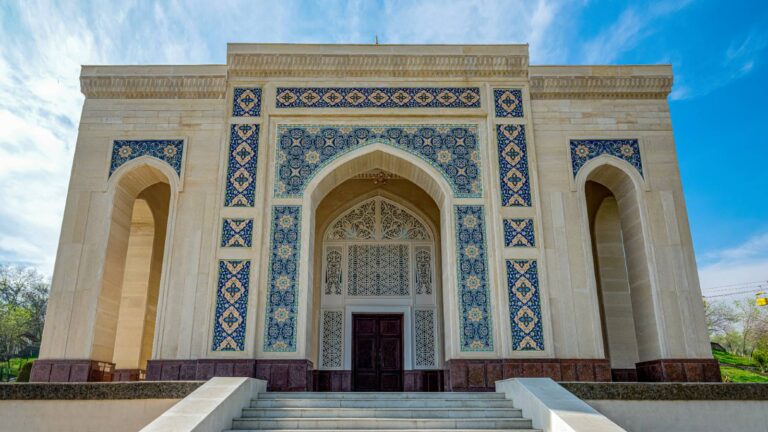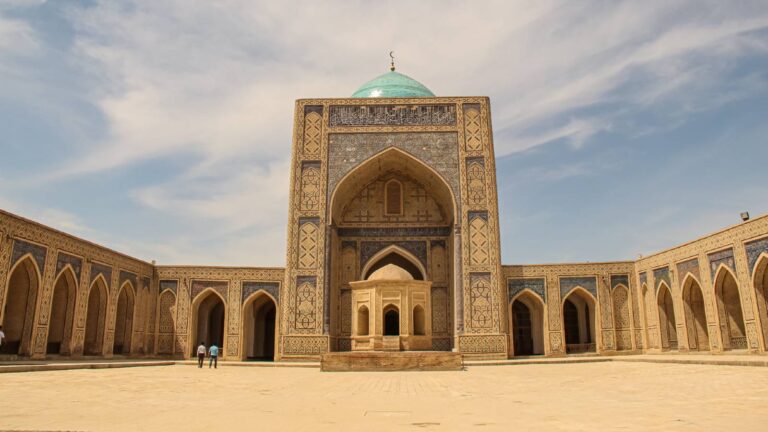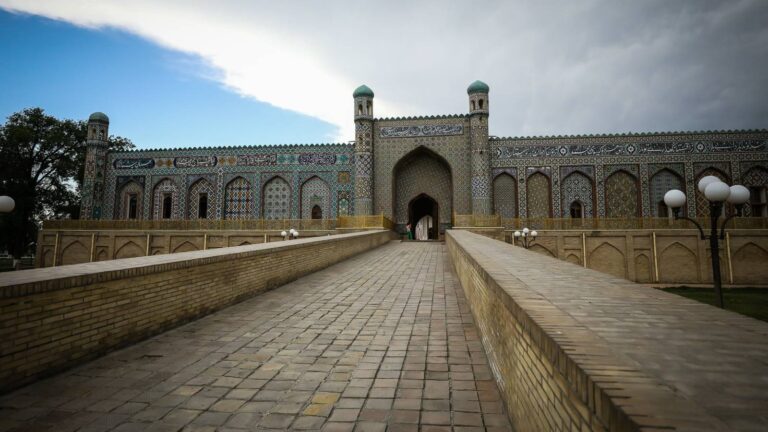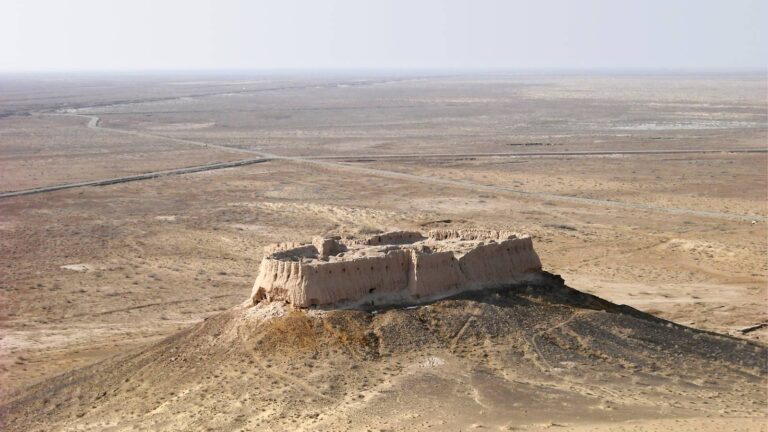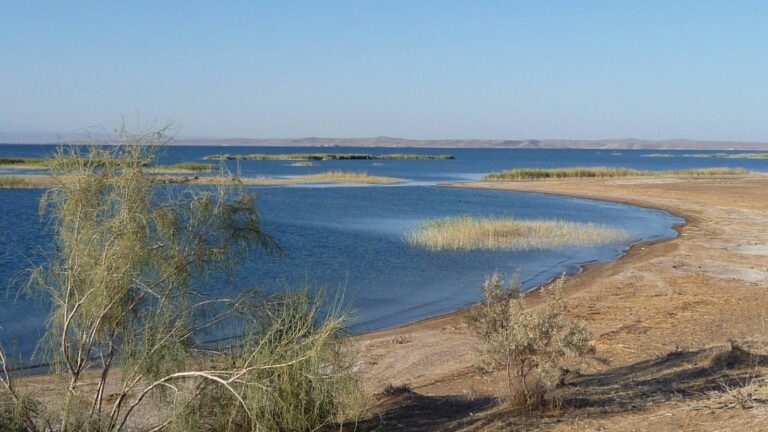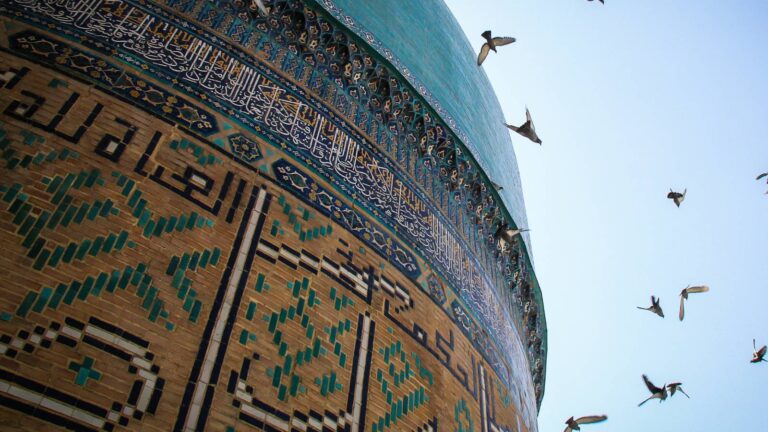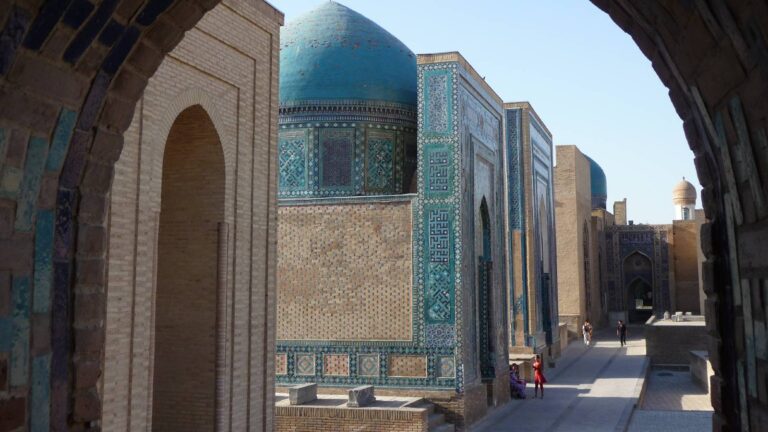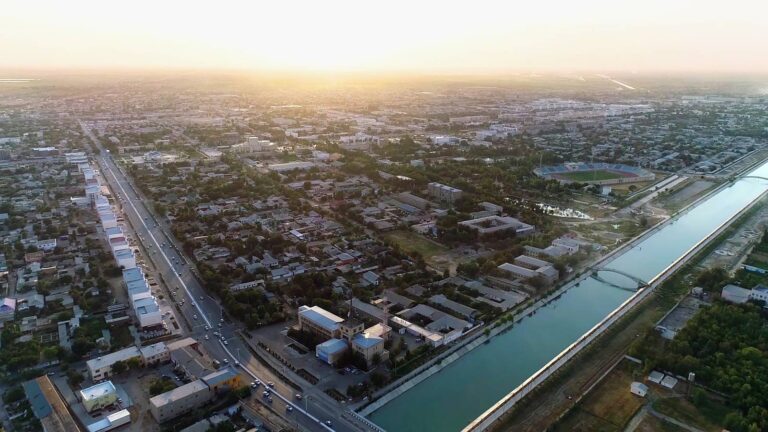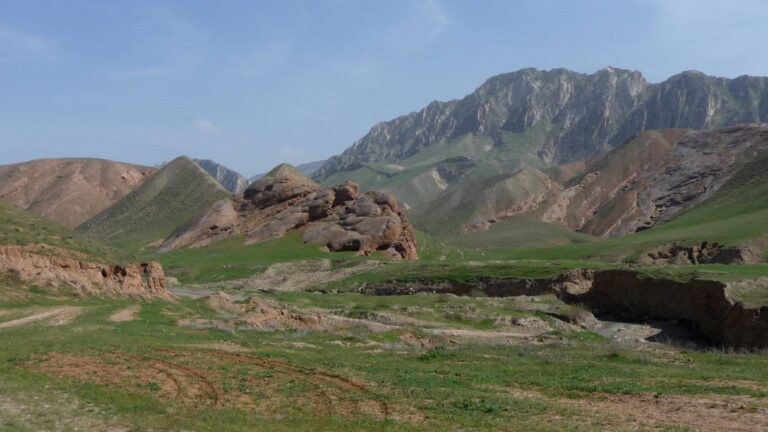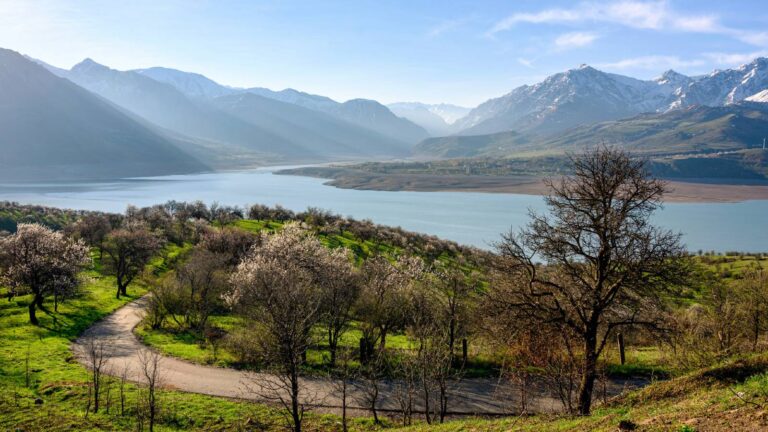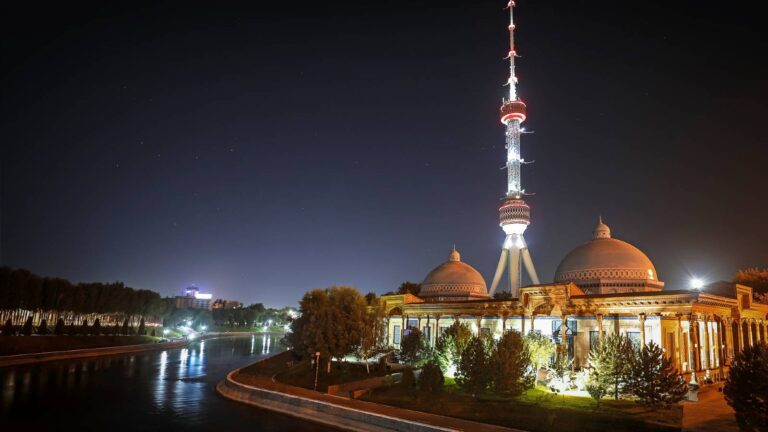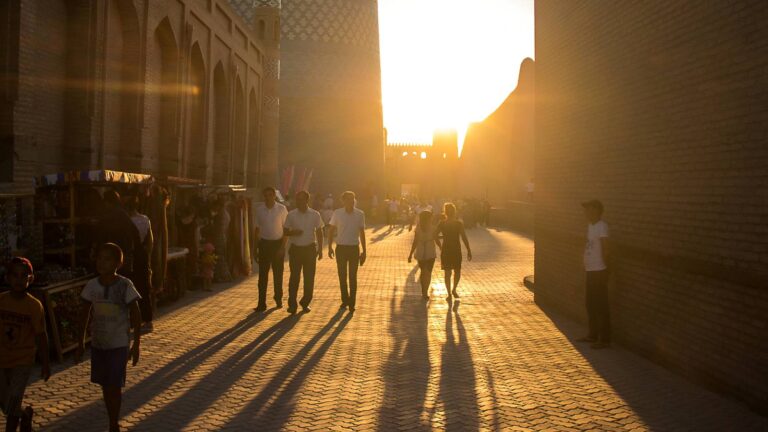All transport system is available in Namangan region mainly, Namangan Airport, train, public buses and taxi. Namangan is served by Namangan Airport, which is located 12 km from the city center.
The city is also served by a railway station, which was built in 1912. Trolleybuses and buses operated in Namangan from 1973 until 2010. They have largely been replaced by public vans nowadays.
Foreign tourists can use Namangan Airport as a main transport. However, local residents come to Namangan region by bus, taxi and their privet automobiles. For this, parking services are available in Namangan.
Main Cities
There are historical and holy places in the region: Mulla Kirgiz mosque (1910), Ota Valikhon tura and Sheykh Iskhok Eshon mosques, Hasrati mavlono Lutfullokh Chustiy complex, Mulla Bozor Okhund mausoleum, as well as such holy places as Baliqlik Mozor, Buloqdi Mozor, and Bibi Ona. These objects are protected by the government.
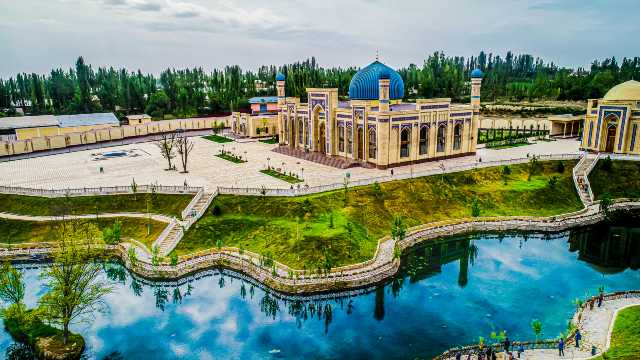
The Namangan region is widely known for its gardens and it is also famous for a national dress made of “Beqasam” material, a type of silk called atlas and Chust knives, embroidered skull-caps, as well as the curative waters of its sanatoria and resorts, the most popular resort being in the city of Chartak. Those are key features of Namangan region.
The city takes its name from the local salt mines (namak kan — “a salt mine”). Babur mentioned the village of Namangan in his memoirs Baburnama. In his book A brief History of the Khanate of Kokand the Russian ethnographer Vladimir Petrovich Nalivkin wrote that Namangan is mentioned in legal documents dating back to 1643.
The city of Namangan dates back to the 17th century. A local salt miner’s settlement (naman kann) appeared in the north of the Ferghana valley. The inhabitants of Aksikent (Ahsykenta) migrated here in the 17th Century after the destructive earthquakes. Aksikent is the old city that was once the center of the valley of Fergana. The city was the province’s administrative centre in the middle of the 18th century.
Namangan, like many other cities in the Fergana valley, was originally populated by Sogdian people, although it later became a Persian speaking city; the local variety of Persian became known as the Tajik language. An influx of Turkic-speaking people into the region, starting in late medieval times.
While Namangan still had a Tajik majority until the middle of the 19th century, identification of its residents with Turkic rather than Iranian cultures has increased. By the late 20th century, most residents of Namangan speak Uzbek, albeit with a significant Tajik-speaking minority.
Celebrations
At the heart of the spirituality of the Uzbek people have always been the ideas of humanity, tolerance, inter-ethnicity, and this ideology is reflected in the essence of national holidays.
One of them is the traditional “Flower Festival”, which (since 1961) is held annually in late August in the park of culture and recreation named after “Babur” in Namangan. It is no coincidence that Namangan is called the “City of Flowers” due to the annual “Flower Festival” in the city. This flower festival is popular not only in Uzbekistan but also in neighboring countries and no other ceremony has been held in other regions of the country.
Moreover, other festivals such as, “National games and dance”, “The women’s festival”, and “Navruz” national holidays are also held each year. Many local and foreign tourists come to see and participate in festivals.
Namangan has been an important craft and trade center in the Fergana Valley since the 17th century.
After annexation by the Russians in 1867, cotton production and food processing became the dominant economic activity, as it did in many other places in the country. Many factories were built in the city during Soviet times.
During World War II, industrial production in Namangan increased fivefold compared with that of 1926–1927. After the war both light and heavy industries increased significantly.
Currently Namangan is mainly a center for light industry, especially in food and textile. There are 36 joint companies and over 400 small and medium enterprises in the city. Industry is primarily based on textiles, with two large silk production complexes, a non-woven fabric manufacturing plant, cotton yarn processing, and numerous smaller textile, leather and footwear plants. The area is also a center for the production of traditional Uzbek handicrafts, especially knives.

